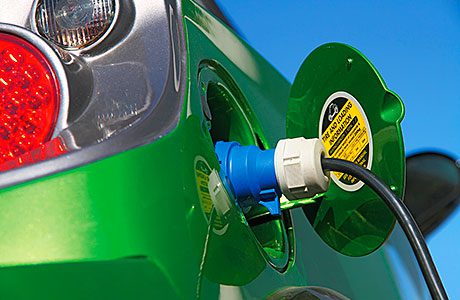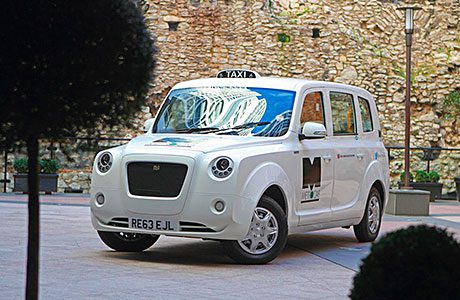
ELECTRIC vehicles remain expensive and their takeup is at a very early stage, but there are reasons to believe the technology has a strong future. The number of drivers opting for a low-emission vehicle is growing each year, and government incentives in various regions of the world should motivate further takeup.
But hopes for their widespread adoption depend on a number of issues. The grail is a car with a long, inexpensive battery life that allows the driver to travel a long distance between charges. Once that point is reached, millions will likely switch from petrol-fuelled cars to EVs, it is believed.
But questions also remain as to how green electric vehicles might actually be, a factor that may depend on where people buy their power. The notion that many EVs will simply be powered with electricity from coal-fired power stations still threatens to undermine confidence in the technology’s green credentials.
UK technology company Frazer Nash recently unveiled a concept for solar-powered EV charging stations. The company presented the idea in January, during a showcase of a number of its electric-powered London taxis (see image, below), an event that coincided with London mayor Boris Johnson’s pledge to ensure all London taxis presented for licensing in 2018 will be zero-emission capable.
The Metrocab is driven by two brushless electric motors connected to the rear wheels. A one-litre petrol engine, coupled with a generator – the “Range Extender” – recharges the battery pack or provides power directly to the motors. Public charging can also be achieved via any mains outlet when the taxi is off duty.
The vehicle is said to provide 75% less CO2 than a traditional black cab and is expected to be advertised with a fuel economy of 75mpg – over three times more efficient than existing London taxis. It has an electric driving range of 40-50 miles per day, and a range of 347 miles using both power sources in combination. Following January’s trial, the company said the Metrocab would save the typical London cabbie around £20 to £40 per day.
Chinese charging headaches
Charging has been a bugbear for EV champions, and appears to be a critical factor for the uptake of the technology. In China, where EV usage has been heavily promoted via government subsidies since 2009, one of the key suppliers looking to provide the charging infrastructure, the utilities company State Grid Corp, previously appeared intent on adopting a slow-charging technology. This would have required EV owners to swap depleted batteries for charged ones, a strategy that seemed to fall foul of the plethora of battery types and manufacturers’ unwillingness to share proprietary technical information.
This appeared to have been supplanted in early April when the Chinese government announced the go-ahead for a plan to install charging stations at residential compounds and shopping malls, signed by 12 property developers and car companies.
China saw sales of fewer than 7,000 vehicles in Q1 of this year, contrasting with Norway, where sales are said to have reached 1,200 vehicles per month, incentivised by tax breaks and an extensive network of free charging stations.
At present EVs and hybrid vehicles account for less than 0.5% of the traffic on UK roads. Some growth projections suggest that by the year 2030 this percentage could be up to 25%. One area of uncertainty is how the power grid can be adapted to handle this extra loading. UK Power Networks is currently piloting the use of smart grid management systems in the London area, to look at how a network of 50 charging stations might be managed to avoid excessive loading.

Managing EV grid use
The study, conducted in conjunction with Imperial College London and Scottish company Smarter Grid Solutions employed the latter’s Active Network Management system. This is a software solution which in this case monitored electricity usage in parts of the London network. Whenever the network is struggling to cope with the demand, the software asks the electricity charging stations to moderate their consumption accordingly. The study kicked off in December 2013 and was expected to yield results by the end of April this year.
One possibility being discussed is that EV users might be restricted to charging their vehicles overnight, lessening the likelihood of causing a power outage during peak demand hours.
In the immediate term, another restrictive factor is the range of EVs, the distance they can cover between charges. Drivers will have to adapt their behaviour appropriately: Remembering to charge their vehicles, and how long it takes. Without wider charging station provision, journeys have to be planned carefully to ensure the destination can be reached without running out of charge.
Premium EVs provide pace
One of the main things EVs have going for them is their powerful acceleration, with the underlying technology providing more torque than is possible with an equivalent petrol engine. This has been showcased to impressive effect with some of the premium EVs on the market. Tesla Motors – the EV company founded by Paypal entrepreneur Elon Musk – recently demonstrated a vehicle that can go from 0 to 100km/h in 3.7 seconds. Tesla describes its own vehicle as “not an EV but an expensive gadget that happens to be an EV”, and is accompanied at the premium end of the market by the likes of BMW and Daimler.






